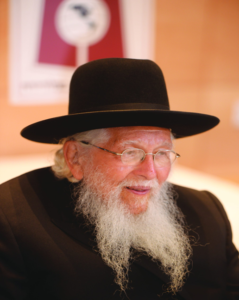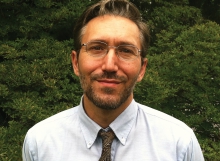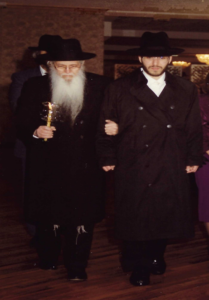The Passing of my beloved rebbe, Rabbi Aharon Moshe Schecter zt’l
 My Rebbe passed this past Thursday, 8/24/2023. From the online religious newspaper, HaModiah: In the half-century that Rav Aharon led the yeshivah, he helped transform it into one of the major strongholds of Torah in New York, and today the yeshivah has an enrollment of over 1800 students, from pre-school through their Kollel Gur Aryeh. The entire Midwood neighborhood where the yeshivah is located is permeated with the spirit of the yeshivah as it acts as a beacon of light that illuminates its surroundings and serves as a magnet drawing in the residents of Midwood to imbibe in Torah and the service of God.
My Rebbe passed this past Thursday, 8/24/2023. From the online religious newspaper, HaModiah: In the half-century that Rav Aharon led the yeshivah, he helped transform it into one of the major strongholds of Torah in New York, and today the yeshivah has an enrollment of over 1800 students, from pre-school through their Kollel Gur Aryeh. The entire Midwood neighborhood where the yeshivah is located is permeated with the spirit of the yeshivah as it acts as a beacon of light that illuminates its surroundings and serves as a magnet drawing in the residents of Midwood to imbibe in Torah and the service of God.

I met my rebbe, Rav Aharon Moshe Schecter, in the fall of 1989. He was only sixty then, but with a long white beard and an angelic countenance, he seemed even older and wiser. He was a great Talmudic scholar and regarded as one of the pre-eminent leaders of the generation; it was a privilege to be in his presence.
I came from a beginners’ “Ba’al Teshuva” yeshiva in Monsey. As soon as we gained proficiency in Talmud, the yeshiva’s goal was to “mainstream” its overzealous students (I was certainly one of them!) by sending them to a yeshiva with FFBs, Frum (religious) From Birth students. Ideally, it would be a win-win. We’d inspire the FFBs, and the FFBs would mellow us out. Yeshivas Chaim Berlin was chosen because their classes were in English, unlike most of the yeshivas then, which had classes in Yiddish. Reb Aharon welcomed us with open arms. He made us feel desired and comfortable. I studied there for nine years until I obtained my first position as the rabbi of the Young Israel of Santa Barbara, CA.
I caught the Rosh Yeshiva’s eye early on because I would begin the morning services. Being a religious zealot, I was one of the few around at 8:00 AM sharp, so I would start the prayers, standing to my rebbe’s left each day.
Reb Aharon was fiery and uncompromising. It wasn’t uncommon to hear him giving someone a tongue lashing in the lobby if they were caught wasting time. But when you met with him privately, he gave you his full attention; it was uncanny, one felt entirely focused upon. He listened carefully and would only respond after much thought and contemplation. After a private consultation with him, one usually left feeling blessed.
Knowing I was tight on funds, he, out of the blue, called me to his office to give me money to buy a suit.
About once a month, I would go to his home for Shabbos. Reb Aharon always wanted you to have a complete experience. So that meant going for the Friday night, the Shabbos lunch, and the late afternoon meals. The Rebbetzin was a superb cook, so it was always something special to look forward to.
During these Shabbos meals, I truly learned how to learn from my rebbe. Upon sitting down at the beautifully adorned Shabbos table, we’d be given Chumashim (Torah texts) with commentary. We’d study the Parsha of the week between delicious and savory courses. During the week, it was hard for me to learn from him, for he taught in a terse Yiddish. However, on Shabbat, he dissected and analyzed text in English. We had him all to ourselves, and we could ask any question. It was at his Shabbos table, graced in white linen and permeated with the splendor of an antique chandelier, where I gained my rebbe’s method of critique and analysis.
My learning was always geared toward Jewish Law, Halacha. I would learn the Gemara and its commentaries. Then I’d study the writings of the early codifiers such as Maimonides and the Tur. I’d then proceed to the Shulchan Aruch, the Code of Jewish Law, and the works of the later deciders. This way, I’d see the span and development of Jewish law and practice over the last 2000 years.
On the other hand, my Rosh Yeshiva was more into “lumdus,” the reasonings behind the various opinions, and this would mostly veer off into the theoretical. After a number of years, although it may sound like hubris, I felt confident enough to disagree with my rebbe. Nonetheless, woe, be the person who behaved contrary to his opinions in front of him!
For instance, he wouldn’t allow one to walk with one’s raincoat belt open on Shabbat. There was no “Eruv” in Brooklyn, therefore, we couldn’t carry in the public domain on Shabbat. If a raincoat had a removable belt, he felt it always needed to be utilized or it was considered carrying. When it was raining, this was not a problem. But once the rain stopped and it was warm, no one wanted to go around in a closed coat. I felt that, whether attached or not, the belt was part of the raincoat gear and, therefore, not extra. If you were walking around on a Tuesday with your raincoat open, would someone ask, “Why are you carrying your belt? Of course not. However, if we were within ten blocks of the Rosh Yeshiva’s home, we all ensured that our belts were tied!
Likewise, the Rosh Yeshivah would send a group of us to an out-of-town Orthodox synagogue for a few weeks during the summer. Our synagogue was in Allentown, PA. We’d learn together in the morning, with the kids in the afternoon and with the adults in the evening. However, this synagogue had a mechitzah (divider between the men’s and women’s sections) that started at three feet and then went higher. This meant that you could see the women if you wanted to. A famous rabbi approved the mechitzah. My Rosh Yeshiva would have no part of it. On Shabbat, we’d have to pray by ourselves in a different chapel, and then we could join the congregation. I felt that if we’re here to bring this congregation closer to Torah, we shouldn’t disenfranchise them by criticizing their kosher mechitzah. The Rosh Yeshiva, though, wouldn’t budge. After two years, the shul decided to bring in Yeshiva University students instead, who accepted their mechitzah.
Nonetheless, Allentown had made an impact on me. Because of my positive experiences teaching there, I decided to become a rabbi. I felt that with my strong secular background and newly acquired knowledge of our texts and traditions, I could relay Judaism’s teachings to modern American Jews in a way they could appreciate.
When I told the Rosh Yeshiva of my desire, I mentioned that I wanted real “semicha,” ordination: the ability to decide Jewish law. I didn’t want to depend on other rabbis to determine every complicated issue for me. Chaim Berlin didn’t have a semicha program since the early eighties, for, it seems, too many of their graduates became Conservative Rabbis. I was such a firebrand: I told him that would never happen to me! So, we devised my own personal semicha program. I would study with the yeshiva in the morning and work on my semicha studies in the afternoon. I started in the fall of ‘95. I received ordination in March of 1998.
When I first became a rabbi, I would correspond with R’ Aharon monthly. He’d write back with encouraging words. He even paid for an experienced rabbi to visit and advise me.
The first time I disagreed with him was on giving a Sefer Torah to the women for Simchat Torah. He felt that we should not break with tradition. I felt that not everything that works in Brooklyn works outside of Brooklyn. We should accommodate women’s needs when it’s not against Jewish law. Likewise, he didn’t like me associating with Reform and Conservative rabbis, but I felt that we all needed to work together for the community’s benefit.
After my first two stints in the rabbinate, I wasn’t sure if I was cut out for the rabbinate. He then spoke to someone in rabbinic placement and procured me a position in Youngstown, OH. The congregation truly appreciated me; from then on, I believed I could succeed as a rabbi.
As my “out-of-town” experiences grew, so did my exposures. New knowledge filled my mind, as did answers to questions that had previously bothered me. Gradually, I moved from “Black Hat” Judaism to Modern Orthodoxy, to Open Orthodoxy, to eventually non-Orthodoxy.
One time I returned to visit the yeshiva and had the “blue string- t’chailit” on my Tzitzit. Knowledge of where the royal blue dye was derived was based on archeology, and the Rosh Yeshiva didn’t give credence to it. He saw it as me breaking away from our group’s attire.
I never told the Rosh Yeshiva about my switch to being a Conservative Rabbi; I’m sure it would have disappointed him. He would say he only made me a rabbi to espouse Orthodox beliefs. I, on the other hand, feel that my ordination was an affirmation of my ability to think and discern for myself. It was by utilizing the same analysis that I learned in my Rosh Yeshiva’s home that I came to where I am now. And I’m still his student, trying to help Jews feel closer to Judaism and God.
Thank you, my dear Rebbe, for believing in me and giving me the skills and confidence to make my own decisions and be a teacher and leader in Israel.
With love,
Your student, Nosson
My Rebbe and I at my first wedding, 1996.
